Solar panels: a complete guide to making your own home energy
Find out about the different solar panels – available and how they can save you energy as well as cash
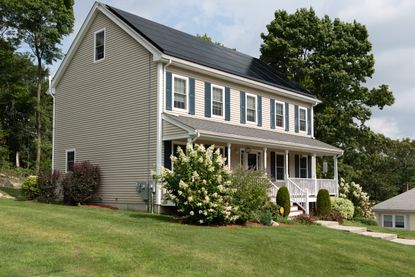

Solar panels are an eco-friendly way to heat the water for your home, generate electricity, or even do both. Install them and you’ll be using renewable energy rather than precious fossil fuels, and saving money.
‘The solar resource of the United States is enormous,’ says Energy Saver, an office of the US Department of Energy that provides energy efficiency and renewable energy information. ‘In fact, just one hour of noontime summer sun is equal to the annual US electricity demand. Most states in the United States have good-to-excellent solar resource.’
But what are the choices when it comes to solar panels? Our guide has all you need to know about the different options for this eco home improvement, and how they could be suited to your home.
What are the advantages of solar panels?
- Solar panels can be used to generate heat or electricity.
- Solar panels are a renewable energy source.
- Solar panels reduce your electricity bills.
- Solar panels may allow you to sell energy back to the grid.
- Solar panels are low maintenance.
Disadvantages of solar panels
- Solar panels are initially expensive to buy and install.
- Solar panels aren't as efficient in areas with poor weather.
- Storing solar energy is costly.
The 3 types of solar panels
If you're considering installing solar panels, then your first stop is deciding on the type of panel to install. Solar panels are broken down by the type of solar technology used, and the way the solar energy is used or stored.
There are three main types of solar panels. Those technologies are called monocrystalline, polycrystalline, and thin-film solar.
These panels use a technology called photovoltaic cells to harness the energy from the sun to create electricity that powers your home.
If you're looking to heat your home's water with solar energy, you'll want to choose solar thermal plates, which is a different type of technology than the kind used by solar panels.
All solar panels contribute to creating a more eco-friendly house, but each has its pros and cons. Here's what you need to know about each type.
Solar thermal plates

Solar thermal panels are an eco heating option for your home's water system, allowing you to make hot water for your home with energy from the sun. It’s actually an older technology than solar photovoltaic (PV), see below, and an efficient one – at around 80 percent efficiency. A solar water heater (or solar domestic hot water system) includes the solar thermal panels themselves (the solar collectors), plus a storage tank.
How does a solar thermal panel work? As sunlight passes through a panel and is refracted by the glass its wavelength changes, which produces heat. The heat is captured by a fluid and moved to the hot water cylinder.
In the US, solar water heating systems may be active or passive. Active systems have circulating pumps and controls and they divide further into direct and indirect circulation systems.
In a direct circulation system household water is pumped through the solar panels and into the home. These are best if you live somewhere where it freezes rarely. In an indirect circulation system there is a closed loop of heat-transfer fluid which contains anti-freeze between the panels and the storage cylinder. The fluid doesn’t reach the faucets. A pump circulates the fluid to heat the water to use in your home. This type of system is favored in climates that experience freezing temperatures, including in the UK.
There are also passive solar water heating systems. These will likely cost less to install but they aren’t as efficient as active systems.
The solar panels used for solar thermal systems can be of different types. Flat plate panels or collectors feature a series of pipes with a metal absorber plate on top that collects the heat from the sun, which is then carried by the fluid in the pipes to the storage cylinder. Evacuated tube panels are made with glass tubes with a metal tube inside, and they’re connected with a header pipe to form a panel. These have the edge over flat panel collectors when it comes to efficiency.
But what happens on a cloudy day? ‘Solar panels will still work in diffused sunlight, though obviously it’s not as effective as direct sunlight,’ says Martyn Bridges, Director of Technical Communication and Product Management at Worcester Bosch. ‘Nevertheless, they will contribute some heat to the hot water storage cylinder.’
Solar panels can, on average, provide around 55 percent of annual hot water requirements of a home. ‘You will always need some other form of heating the hot water cylinder to either raise the temperature in the cylinder to the required temperature or for heating the cylinder when the panels are in either semi or full darkness,’ explains Martyn Bridges. ‘The most common option is usually a boiler, which is needed to heat the home anyway. Alternatively, an electric immersion heater.’
Solar photovoltaic panels
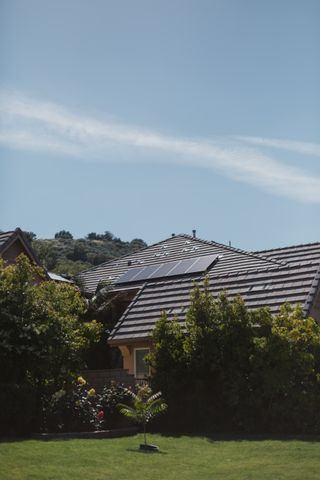
Photo by Vivint Solar on Unsplash
Solar photovoltaic (PV) panels allow you to generate electricity from the sun. The panels are made up of individual PV cells that create an electric current when they’re hit by sunlight. An inverter is also required to convert the direct current to alternating current for use in a home.
You may want to invest in a battery to store the energy, too. It can be charged when the power’s available, and ready for use when needed.
‘The decision to add a battery storage system depends on how much electricity you’re generating,’ explains Christian Engelke, Technical Director at Viessmann. ‘Typically, solar systems have been designed up to the maximum allowed under certain government grant programs, such as the domestic renewable heat incentive in the case of the UK. This creates over production, with energy sent back to the grid. It can pay the homeowner to save the energy produced for use overnight, however, it needs to be calculated based on the expected usage and export. The cost of storage in the UK often doesn’t cover the difference.’
Solar PV panels can work whatever the climate where you live, but the roof of your home does need to be suitable. Its size, orientation, slope and shape as well as whether it’s shaded by trees or neighboring buildings are all crucial factors. Of course, it will also need to be structurally sound and not in need of replacement in the near future.
If you want to check out whether your roof is suitable, you can use a mapping service via Energy Saver. You can also take a look at how much power you could generate with the tool PVWatts.
Solar hybrid panels
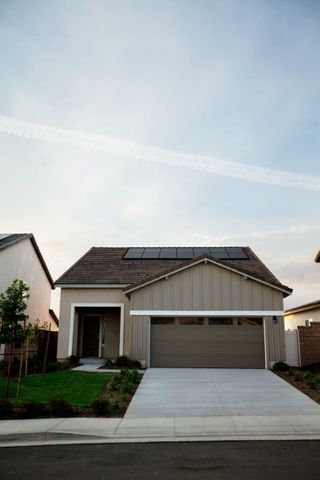
Hybrid solar panels, otherwise called PVT solar panels, are a combination of solar photovoltaic panel and solar thermal panel in one. In essence, one of these is a solar PV panel that also has pipes built into the collector with fluid circulating between it and a water cylinder. As the sun shines, its light is absorbed by the PV cells, while the heat is absorbed by solar thermal part.
The result is that these can generate electricity and heat at the same time but, although they have the advantage of doing both jobs, these hybrid panels do have limitations when set against the separate panel types. The thermal element doesn’t reach the same high temperature as a dedicated solar thermal panel. Additional heating will therefore be required.
PVT panels can also be expensive and harder to source.
Types of PV Solar Panels
If you're opting for solar photovoltaic (PV) panels to use as your home's energy resource, you'll also have to decide between the three types of PV panels.
They are monocrystalline, polycrystalline, and thin-film solar panels.
Monocrystalline and polycrystalline solar panels
Crystalline solar panels, including mono- and poly-crystalline panels are a type of photovoltaic panel, because they use photovoltaic cells to create energy. Crystalline solar panels are the most popular type for residential use.
Monocrystalline solar panels get their name because they are made of a single silicon crystal. They're incredibly energy efficient, but cost more than other solar panel options. Still, they're popular with homeowners thanks to their quality, neutral black color and streamlined design.
If you're looking for a more affordable option, you'll want to consider polycrystalline solar panels. Polycrystalline solar panels are made by melting various silicon fragments together. They cost less than monocrystalline versions, but are also less energy efficient, and have a blue color that not all homeowners will find appealing.
Thin-film solar panels
Thin-film solar panels are also a type of photovoltaic solar panel. Thin film is a newer technology than crystalline, and though the technology has been around for forty years, it's considered second-generation because it's derived from crystalline technology. Thin-film panels are a less common residential solar panel option because they're less efficient, which means the panels need to be much larger than crystalline versions.
Still, thin-film solar panels have their benefits. For one, they're less expensive than crystalline panels. And, they create less waste during the manufacturing process.
How many solar panels are needed to power my home?
There is a formula you can use to calculate how many solar panels are needed to power a home, which is: system size divided by production ratio divided by panel wattage. Your solar panel supplier will help you to work out the right amount of solar panels needed for your home, but the average home will typically have between 20 and 24. However, different panels have different wattage capacities, so speaking to a professional is vital to ensure you have the balance right.
Can solar panels power my whole house?
Yes, solar panels can power a whole house but this does depend on getting the correct number of panels fitted to cope with the energy demands your household will put upon them. You may also find that you need to store the surplus energy, which can create added costs initially.
Sign up to the Homes & Gardens newsletter
Decor Ideas. Project Inspiration. Expert Advice. Delivered to your inbox.

Sarah is a freelance journalist and editor. Previously executive editor of Ideal Home, she’s specialized in interiors, property and gardens for over 20 years, and covers interior design, house design, gardens, and cleaning and organizing a home for H&G. She’s written for websites, including Houzz, Channel 4’s flagship website, 4Homes, and Future’s T3; national newspapers, including The Guardian; and magazines including Future’s Country Homes & Interiors, Homebuilding & Renovating, Period Living, and Style at Home, as well as House Beautiful, Good Homes, Grand Designs, Homes & Antiques, LandLove and The English Home among others. It’s no big surprise that she likes to put what she writes about into practice, and is a serial house renovator.
-
 Serena & Lily is currently offering a 20% discount sitewide – I've scoured through the entire collection to find you the best options
Serena & Lily is currently offering a 20% discount sitewide – I've scoured through the entire collection to find you the best optionsSerena & Lily is currently offering a 20 percent discount off their entire site, and I found the best home decor items and furniture pieces to add to your cart right now.
By Nikhita Mahtani Published
-
 How to get rid of flying termites – 5 tips to prevent these pests from damaging your property
How to get rid of flying termites – 5 tips to prevent these pests from damaging your propertyFlying termites represent a significant warning of a termite problem in your home – here's what experts say about how to deal with them
By Lola Houlton Published
-
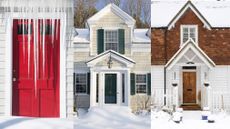 10 ways to winterize a house – get your home ready for winter
10 ways to winterize a house – get your home ready for winterThese simple ways to winterize a house will help you get your home ready for the inclement weather
By Holly Reaney Last updated
-
 Eco-friendly building materials – discover the green options
Eco-friendly building materials – discover the green optionsHere are the products to look out for if you’re committed to using eco-friendly building materials in your remodel
By Sarah Warwick Published
-
 This Dutch farmhouse combines country charm with an eco outlook
This Dutch farmhouse combines country charm with an eco outlookNow a country idyll, this once crumbling farmhouse was transformed by a large-scale renovation that preserves the property's past as well as future proofing it
By Vivienne Ayers Published
-
 Eco houses – 7 most beautiful sustainable builds, from forest dwellings to city homes
Eco houses – 7 most beautiful sustainable builds, from forest dwellings to city homesThese are some of the world's most coveted eco houses, beautiful homes designed by architects with their gaze firmly fixed on sustainability
By Lucy Searle Published
-
 Eco cooling – sustainable air conditioning for your home
Eco cooling – sustainable air conditioning for your homeDiscover eco cooling options – the greenest ways to keep your home from over-heating
By Sarah Warwick Published
-
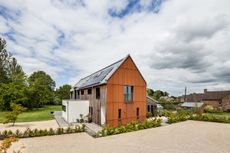 Eco home improvements: how to make your house greener
Eco home improvements: how to make your house greenerDiscover heating, cooling and clean energy solutions for your home plus eco-friendly product choices
By Sarah Warwick Last updated
-
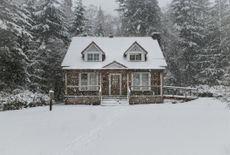 Eco heating – from heat pumps to boilers and furnaces
Eco heating – from heat pumps to boilers and furnacesFind out about the eco heating options that can make your home greener and reduce bills
By Sarah Warwick Last updated
-
 Are these Japanese-inspired, energy-efficient homes the future of homebuilding?
Are these Japanese-inspired, energy-efficient homes the future of homebuilding?These new developments aim to prioritize green space, community and good design
By Jennifer Ebert Published